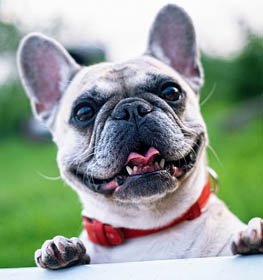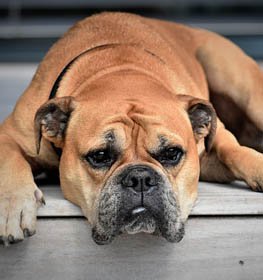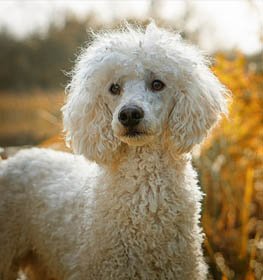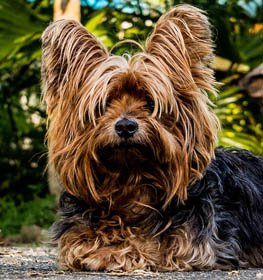Australian Bulldog Information & Dog Breed Facts
Collection of all the general dog breed info about Australian Bulldog so you can get to know the breed more.
| Group | Companion Dogs |
|---|---|
| Popularity Rank | 219 |
| Reviews | 3 |
| User Ratings | |
|
Compare the Australian Bulldog With Other Dogs
Select at least one dog breed to make the comparsion. | |
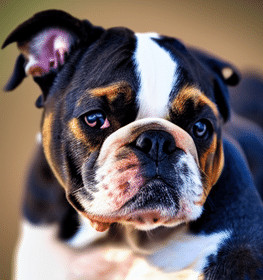 | |
| Origin | |
|
Common Names & Aliases
What other names is an Australian Bulldog known by? Discover all traditional, regional and informal names used for this breed. | Aussie Bulldog |
|---|---|
|
Breed Classification
What type of dog breed is an Australian Bulldog? Learn about its genetic classification and breeding category. | Purebred |
|
Size Classification
What size category is an Australian Bulldog? Learn how big the Australian Bulldog breed typically grows. | Medium |
|---|---|
|
Weight Statistics
How much does an Australian Bulldog weigh? Discover typical weight ranges for adult males and females of the Australian Bulldog breed. | Male: 60-78 pounds (28-35 kg), Female: 50-61 pounds (23-28 kg) |
|
Average Weight
What is the average weight of an Australian Bulldog? | Male: 69 pounds (31.5 kg), Female: 55.5 pounds (25.5 kg) |
|
Height
How tall is the Australian Bulldog? Australian Bulldog height: | Male: 18-20 inches (46-51 cm), Female: 17-19 inches (44-48 cm) |
|
Average Height
What is the average height of an Australian Bulldog? | Male: 19 inches (48.5 cm), Female: 18 inches (46 cm) |
|
Price Range
How much does an Australian Bulldog puppy cost? Find current market prices and factors affecting Australian Bulldog costs. | $500-$700 If you choose to purchase the Australian Bulldog, you should know that the mentioned amount of money is an average of the collected data from breeders’ sites and puppy finder places. If you have a Australian Bulldog for sale, please advertise it on a reliable website to make sure the Australian Bulldog gets to a happy place. |
|---|---|
|
Availability
How easy is it to get a Australian Bulldog? How many Australian Bulldog are there in the world? | Average: The Australian Bulldog is a commonly available dog breed. There is less risk of overbreeding compared to the very popular dogs. Of course, they may be more popular in some countries, and inbreeding may occur, so be careful. |
|
Intelligence Rating
How intelligent is an Australian Bulldog? Discover the Australian Bulldog's intelligence ranking and learning capabilities. | Average: It takes patience to teach this breed any tricks or commands, but the effort is worth it. They understand and remember new commands after an average of 25-40 repetitions.
The Australian Bulldog ranks average in the intelligence ranking of dogs. |
|---|---|
|
Training Difficulty
How easy is it to train an Australian Bulldog? Learn about the Australian Bulldog's trainability and response to training methods. | Australian Bulldog dogs are quite easy to train. Sometimes they can be challenging, but if you're consistent in teaching new commands they will obey for sure. |
|
Watchdog Rating
How good is an Australian Bulldog as a watchdog? Learn about the Australian Bulldog's alertness and guarding instincts. | Australian Bulldog dogs are good watchdogs. Their main job is to observe and they're consistent in their effort. Good vocal cords and a sense of hearing belong to them. Usually, they're territorial and protective about their property, so the Australian Bulldog dogs will alert you if they sense something different.
|
|
Territorial Protection
Is an Australian Bulldog protective of its territory? Learn about the Australian Bulldog's guarding instincts and behavior. | Australian Bulldog dogs strongly protect their territory. This breed is a complete security guard, so you don't have to be afraid in case of danger. |
|
Personality Traits
What personality does an Australian Bulldog have? Learn about characteristic Australian Bulldog temperament and behavior traits. | LovingAlertSensitiveIntelligentLoyalEasygoingFamiliar |
|---|---|
|
Sensitivity Level
How sensitive are they? Australian Bulldog sensitivity: | Sensitive: Australian Bulldog dogs don't like an irregular daily routine, noisy household, and frequent guest visits.
This breed's emotional level reflects their owner's feelings and they don't handle punishments well. |
|
Affection Level
How affectionate are they? Is an Australian Bulldog a good family dog? | Average to High: Australian Bulldog dogs are highly affectionate dogs. They like being involved in the family's life. This breed isn't considered an aloof dog. |
|
Social Needs
How much social interaction does the Aussie Bulldog need? Australian Bulldog social needs: | Australian Bulldog dogs are a social breed. They enjoy being around people or other animals. This breed doesn't tolerate being left alone. |
|
Impulse to Wander or Roam
How likely is the Australian Bulldog to run away? Does this breed explore or wander a lot? Does Australian Bulldog roam? | Australian Bulldog dogs tend to escape less than other breeds. They have low to average wanderlust potential. Exploring the world is not the best activity they can imagine. |
|
Prey Drive
Do this canine have a strong prey drive? Does Australian Bulldog have high prey drive? | Australian Bulldog dogs have an average prey drive, which means that they don't have a high impulse to chase and catch something like a cat or any other small aminals, but it might happen. Training can help to achieve good behavior. |
|
Barking Frequency
Does an Australian Bulldog bark a lot? Learn about typical Australian Bulldog vocalization patterns and triggers. | Low to Average: The Australian Bulldog rarely barks. This breed could be a good choice if you're looking for a quiet breed. They don't bark unless there is a good reason.
Top reasons for barking: protection, alarm, fear, boredom, attention-seeking, greeting, separation anxiety, compulsive barking. |
|---|---|
|
Playful Nature
How playful is an Australian Bulldog? Understand the typical play drive and energy level of the Australian Bulldog breed. | Australian Bulldogs are not the most playful dog breed. Sometimes they do like playing, but that's not their favorite activity. |
|
Apartment Adaptability
Can an Australian Bulldog live in an apartment? Learn about the Australian Bulldog's suitability for apartment living. | Not an apartment-friendly dog the Australian Bulldog breed. If you don't have a garden, think carefully about your decision, keeping Australian Bulldog indoors can cause a lot of problems. |
|
Lifestyle Adaptability
How adaptable is an Australian Bulldog to lifestyle changes? Learn about the Australian Bulldog's flexibility to new situations. | Average: Australian Bulldog dogs adapt to lifestyle changes and different living environments quite okay usually. |
|---|---|
|
Alone Time Tolerance
Can an Australian Bulldog be left alone? Learn about the Australian Bulldog's tolerance to solitude. | Australian Bulldog dogs do best when a family member is at home during the day or if their workplace is dog-friendly so they can take the dog at work. |
|
Bite Risk Assessment
What is an Australian Bulldog biting potential? Learn about the Australian Bulldog's bite risk factors. | Moderate ⏺ The Australian Bulldog has an average chance of biting somebody. Top reasons for dog bite: protection, pain, excitement, herding instinct, being provoked. (Data based on the available online bite statistics.) |
|---|---|
|
Mouthing Tendency
Is an Australian Bulldog mouthy? Learn about the Australian Bulldog's tendency to use mouth during play. | Australian Bulldog dogs have a lower than average tendency to nip, chew, playbite, or herd people. It's a common habit during puppyhood, not aggressive behavior. These "bites" don't hurt, but Australian Bulldog dogs need to be taught a good attitude. |
|
Bite Strength Rating
How strong is an Australian Bulldog bite? Learn about the Australian Bulldog's bite force measured in PSI. | Between 200 and 400 PSI ⏺ Australian Bulldog bite force: Ordinary. Bite force Australian Bulldog measurements typically fall within the range of 200 to 400 PSI. The bite force of an Australian Bulldog is considered ordinary when compared to other dog breeds, but it is still quite powerful. This Australian Bulldog bite force PSI can cause bite wounds. Australian Bulldog bite PSI is not something that should be feared if the dog is well-trained and managed. To avoid any issues, it's essential to learn how to train an Australian Bulldog puppy not to bite from an early age.
The Australian Bulldog, and many others, have a fearsome presence because they have significant jaw strength, so it is important not to anger the dog and have it around strangers until it is fully trained. However, they are usually quite calm and good companions, they work well in families and are easy to care for. In conclusion, while the Australian Bulldog bite force is certainly an interesting aspect of the breed, it is important not to let it overshadow the many other reasons why these dogs are so loved and respected. With proper training and socialization, an Australian Bulldog can be a loyal and protective companion for your family. |
|
Average Lifespan
How long does an Australian Bulldog live? Learn about the typical lifespan of the Australian Bulldog breed. | 10-12 years The average lifespan of Australian Bulldog: 11 years |
|---|---|
|
Climate Tolerance
How well does an Australian Bulldog handle different weather? Learn about the Australian Bulldog's climate adaptability. | Prefers average to warm weather conditions Different dogs have different preferences when it comes to weather conditions. However, in general, most dogs prefer average to warm weather conditions, as they typically find hot weather conditions to be uncomfortable and taxing. |
|
Health Concerns
What health issues are common in an Australian Bulldog? Discover typical conditions affecting the Australian Bulldog breed. | Australian Bulldogs tend to have more frequent health issues than other breeds. Regular vet check-ups are needed.
|
|
Vet Care Frequency
How often does an Australian Bulldog need vet visits? Learn about the Australian Bulldog's veterinary care requirements. | Frequent The Australian Bulldog should have a complete physical check-up at least once (but preferably twice) per year. If your dog shows any symptoms, call your veterinarian. |
|
Health Problems
What genetic/health problems does the Australian Bulldog breed have? What are the health issues and concerns of the Australian Bulldog breed? Most common health risks of Australian Bulldog: | Hip Dysplasia Eye ProblemsBloatDry SkinObesity |
|
Energy Rating
How energetic is an Australian Bulldog? Understand daily activity needs of the Australian Bulldog breed. | Australian Bulldog dogs have a higher energy level than other dog breeds. If you want a dog for snuggling on the couch, this breed isn't the perfect choice for you. |
|---|---|
|
Activity Requirement / Exercise Need
How much exercise does an Australian Bulldog need? How much exercise do Australian Bulldog dogs require per day?
Do Australian Bulldog dogs need a lot of exercises? | Australian Bulldog dogs need quite a lot of exercise. Daily walks should be on schedule. If you live an active life, this breed can be a good choice for you. |
|
Sleeping Need
How much sleep does the Australian Bulldog breed need? | Australian Bulldog dogs are quite energetic dogs and they don't spend too much time with sleeping. If you live an active life, this breed can be a good choice for you. |
|
Obesity Tendency
Is an Australian Bulldog prone to weight gain? Learn about the Australian Bulldog's obesity risks. | High: The Australian Bulldog breed has a strong tendency to be overweight. Try to find the happy medium between exercise and feeding. If you want to keep balance, increase the amount and frequency of your daily dog walk and play with the Australian Bulldog more often.
If you notice any weight gain, consult your veterinarian and make a diet plan. Reduce unhealthy food and snacks, and measure the Australian Bulldog weight regularly. |
|---|---|
|
Food Consumption
How much food does an Australian Bulldog need daily? Learn about the Australian Bulldog's feeding requirements. | 2 to 2.5 cups of a high-quality dog food daily, divided into two meals. |
|
Allergy Friendliness
Is an Australian Bulldog hypoallergenic? Learn about the Australian Bulldog's suitability for allergy sufferers. | No Australian Bulldog dogs don't do well with allergy sufferers by causing allergic reactions. Some dog breeds are even considered to higher possibility of an allergic response. Coat type isn't necessarily relevant, because most people are allergic to dander (flakes on the dog's skin) or saliva, not actually to dog hair. |
|---|---|
|
Coat Colors
What colors does an Australian Bulldog come in? Discover all possible Australian Bulldog color variations. | Red Fawn Brindle OrangeMahogany Apricot |
|
Grooming Requirements
How much grooming does an Australian Bulldog need? Learn about Australian Bulldog coat maintenance requirements. | Advanced: The Australian Bulldog requires a lot of grooming. Cutting the dog's hair by a professional groomer can be helpful sometimes. Regular brushed dog's coat is less likely to shed. Ears and eyes should be cleaned often to avoid infections. Don't skip the seasonal flea treatment too. Occasional dog nail trimming and dog baths are important.Check the local pet store for dog grooming supplies and find the best dog shampoo to keep its coat healthy and to give your Australian Bulldog a pleasant experience of a dog bath. If you don't have the time, skill, or money to take care of your Australian Bulldog, search for the best dog groomer or clipping service in your area and book an appointment. Maybe you're lucky to have a dog boarding service that includes grooming or walk-in dog bath places nearby. |
|
Drooling Tendency
Does an Australian Bulldog drool a lot? Learn about the Australian Bulldog's drooling habits. | The Australian Bulldog is a big drooler, so if you're disgusted by slobber spots on your clothes, you should choose a dog from another breed. Drooling is the unintentional saliva flowing outside of the mouth. It can be completely normal or a sign of a health problem. Certain dog breeds drool much more than others, just like the Australian Bulldog.
If you notice any change in your dog's drooling habit, you should contact a vet as soon as possible. |
|
Stinkiness Rating
Does an Australian Bulldog smell bad? Learn about the Australian Bulldog's natural odor levels. | High 🔼 The Australian Bulldog has a high chance of bad smell. Top reasons for dog stinkiness: infection of bad tooth/ear/skin folds, gas attacks. |
|
Coat Characteristics
What type of coat does an Australian Bulldog have? Learn about the Australian Bulldog's fur characteristics. | Smooth |
|
Bathing Needs
How often does an Australian Bulldog need baths? Learn about the Australian Bulldog's bathing requirements. | 4-6 weeks Average. Experts recommended at least every 4-6 weeks for this family pup. According to a study, 56% of pet parents don’t bathe their dogs as frequently as they should, and 60% use the sniff test when deciding when it’s bath time.
Bathing your dog is beneficial to them in more ways than just one. It’s also a good time to look for unusual scratches, bumps, fleas, and other irregularities. When their hair is wet and flat against their body, these details are more visible. |
|
Shedding Level
How much do Australian Bulldog dogs shed? How to control, reduce and prevent the shedding of the Aussie Bulldog? Do Australian Bulldog dogs shed a lot? | Australian Bulldog dogs shed moderately. It's a natural process of the hair growth cycle. Regular brushing reduces the amount of hair that sheds. It mostly depends on their health status and breed type. |
|
Child Compatibility
Is an Australian Bulldog good with children? Learn about the Australian Bulldog's behavior around kids of different ages. | Australian Bulldog dogs are kid-friendly dogs. This breed is a good choice if you have children. |
|---|---|
|
Pet Compatibility
How well does an Australian Bulldog get along with other pets? Discover the Australian Bulldog's compatibility with other animals. | Australian Bulldog dogs are generally with other pets. |
|
Stranger Friendly
Are they aggressive or friendly towards/with strangers? Australian Bulldog temperament with other people: | Australian Bulldog dogs are not the most stranger-friendly dogs. |
|
Cat Friendly
How well do Australian Bulldog dogs get along with cats? Are they good with kittens? What is this fido's temperament with cats? Can they be good with cats? Can the Australian Bulldog breed live with a cat? | Australian Bulldog dogs are average friendly towards cats. |
|
Dog Friendly
Is Australian Bulldog good with other dogs? Are they dog-friendly dogs? How well do Australian Bulldog dogs get along with other dogs? | Australian Bulldog dogs are average friendly towards other dogs. |
|
Good For First Time Owners
Is Australian Bulldog breed good for first-time owners? Do they make a good dog for novice owners? Is Australian Bulldog breed suitable for first-time owners? | Yes Australian Bulldog dogs are good for novice owners, due to their easy-going personality. |
|
Office Friendly
Are Australian Bulldog dogs good office canines? Do Australian Bulldog dogs make good office-friendly pets? Can they be office dogs? | No Australian Bulldog is not the best dog breed for office environment. |
|
Senior Citizens Friendly
Are they senior citizens friendly dogs? How well do Australian Bulldog dogs get along with the elderly people? What is the Aussie Bulldog temperament with senior people? Are Australian Bulldog dogs good for elderly owners? | Australian Bulldogs are usually recommended for elderly people. |
|
Service Dog Capability
Can an Australian Bulldog be a service dog? Learn about the Australian Bulldog's service work potential. | Not really This breed generally not used as a service dog. A service dog is a term used in the USA to refer to any type of assistance dog specifically trained to help people who have disabilities, such as visual impairment, hearing impairments, mental disorders, seizures, mobility impairment, and diabetes. Service dogs are protected under the ADA (Americans with Disabilities Act).
Australian Bulldog is not the best breed for service purposes. |
|---|---|
|
Therapy Work Suitability
Is an Australian Bulldog good as a therapy dog? Learn about the Australian Bulldog's therapy work aptitude. | Not really This breed is generally not used as a therapy dog. A therapy dog is a dog that might be trained to provide affection, comfort, and love to people in hospitals, retirement homes, nursing homes, schools, hospices, disaster areas, and people with anxiety disorders or autism.
Australian Bulldog is not the best breed for therapeutic purposes. |
|
Scent Detection Ability
Is an Australian Bulldog good at detection work? Learn about the Australian Bulldog's scenting abilities. | Not really They are not typically employed for this type of work, but there may be exceptional cases. A detection dog or sniffer dog is a dog that is trained to use its senses (mostly its smell) to detect substances such as explosives, illegal drugs, wildlife scat, currency, blood, and contraband electronics such as illicit mobile phones.
Australian Bulldog is not the best breed for detection purposes. |
|
Search & Rescue Potential
Can an Australian Bulldog do search and rescue? Learn about the Australian Bulldog's SAR capabilities. | Not really This dog breed is not typically used as a search and rescue dog. The use of dogs in search and rescue (SAR) is a valuable component in wilderness tracking, natural disasters, mass casualty events, and locating missing people.
The Australian Bulldog is not the best breed for SAR purposes. |
|
Maritime Work Ability
Is an Australian Bulldog good on boats? Learn about the Australian Bulldog's maritime capabilities. | Not really Australian Bulldog breed usually doesn't like being on a boat. Boat dogs were typically bred for their strength, stamina, and water resistance, as they were often required to perform tasks such as pulling in fishing nets, and jumping into the water to retrieve ropes or lines, or helping to move cargo. Sailor dog is a type of dog that was bred to accompany sailors on their voyages. They were typically used for three purposes: as a working dog, a watchdog, and as a companion. A boat dog is a term used to describe a type of dog that was traditionally bred and used as a working dog on boats. |
|
Draft Work Capability
Can an Australian Bulldog pull carts? Learn about the Australian Bulldog's drafting abilities. | Not really A drafting dog or draft dog is a dog bred and used for cart pulling. Dogs bred for this work have strong builds and qualities that are needed, strength and determination.
Australian Bulldog is not the best breed for drafting purposes. |
|
Military Service Background
Was an Australian Bulldog used in military service? Learn about the Australian Bulldog's military history. | Not really In history, this breed was not really used for combat dog. |
|
Puppy Litter Size
How many puppies does an Australian Bulldog usually have? Learn about typical litter sizes. | 5-8 puppies |
|---|---|
|
Pregnancy Duration
How long is an Australian Bulldog pregnant? Learn about the Australian Bulldog's gestation period. | 60-64 days Reproductive cycle of the female Australian Bulldog: The first period called Proestrus lasts for about 9 days.
During this time the females start to attract males. You can notice by swelling vulva and bloody discharge. The second part is the Estrus when the female is receptive for the male. It lasts for about 3 to 11 days. The sign of the proestrus part is the soft and enlarged vulva. The discharge decreases and lightens in color. The third part is the Diestrus. Normally, it occurs around day 14. In this period the female’s discharge changes for vivid red and coming to its end. The vulva returns to average, and she will no longer permit mating. The fourth part called the Anestrus. The time frame between heat periods normally lasts about six months. |
|
Breeding Frequency
How often can an Australian Bulldog have puppies? Learn about safe breeding intervals. | Once a year. More frequent breeding is not healthy. It is very important not to buy a dog from a puppy mill, where the needs of the pups and their mothers are ignored. It's an inhumane high-volume dog breeding facility, where puppies born several times a year. |
|
AKC Classification
What AKC group is an Australian Bulldog in? Learn about the Australian Bulldog's AKC classification. | Not recognized by the American Kennel Club. |
|---|---|
|
FCI Classification
What FCI group is an Australian Bulldog in? Learn about the Australian Bulldog's international classification. | Not recognized by FCI. |
|
Kennel Club Recognition
Which kennel clubs recognize an Australian Bulldog? Learn about the Australian Bulldog's official recognition. | America's Pet RegistryDog Registry of America Inc. |
Australian Bulldog Pros and Cons
- Watchdog Rating: Australian Bulldog dogs are good watchdogs.
- Mouthing Tendency: Australian Bulldog dogs have a lower than average tendency to nip, chew, playbite, or herd people.
- Impulse to Wander or Roam: Australian Bulldog dogs tend to escape less than other breeds.
- Child Compatibility: Australian Bulldog dogs are kid-friendly dogs.
- Senior Citizens Friendly: Australian Bulldogs are usually recommended for elderly people.
- Good For First Time Owners: Australian Bulldog dogs are good for novice owners, due to their easy-going personality.
- Health Concerns: Australian Bulldogs tend to have more frequent health issues than other breeds.
- Allergy Friendliness: Australian Bulldog dogs don't do well with allergy sufferers by causing allergic reactions.
- Apartment Adaptability: Not an apartment-friendly dog the Australian Bulldog breed.
- Grooming Requirements: Advanced: The Australian Bulldog requires a lot of grooming.
- Drooling Tendency: The Australian Bulldog is a big drooler, so if you're disgusted by slobber spots on your clothes, you should choose a dog from another breed.
- Stinkiness Rating: The Australian Bulldog has a high chance of bad smell.
- Obesity Tendency: High: The Australian Bulldog breed has a strong tendency to be overweight.
- Alone Time Tolerance: Australian Bulldog dogs do best when a family member is at home during the day or if their workplace is dog-friendly so they can take the dog at work.
- Office Friendly: Australian Bulldog is not the best dog breed for office environment.
Australian Bulldog History
The Australian Bulldog is a newly developed breed coming from Australia. Although the modern Australian Bulldog was only developed in the early 1990s, the breed can trace its history back to the Bulldog">Old English Bulldog, a breed with a very long history in England.
When Australia was first settled by Europeans, they brought their domestic pigs with them. Many of these pigs escaped and went feral. Pigs have become a major pest in Australia, causing severe injuries and massive property damage. Feral pigs, unlike their domestic counterparts, are fast, highly intelligent, and extraordinarily fierce. One of the only ways to hunt pigs, often called razorbacks, is with the use of specially bred dogs. In order to hunt pigs, a dog must be very determined and tough enough to withstand several injuries. Australians preferred to use mixed-breed dogs for the job, most of them are the descendants of the Bulldog">Old English Bulldog, including the Boxer, Bull Terrier, and the Staffordshire Terrier. In the early 1990s, Queensland resident Pip Nobes owned a male English Bulldog. As an experiment, she crossed it with her husband’s dog, a female mixed-breed dog who was used for pig-hunting. The initial crossing was made out of curiosity. Nobes was an English Bulldog lover who had already owned two of these dogs. However, both were in extremely poor health, as was common in the breed at that time. As pig-hunting dogs are usually in extremely good health, she realized that the resulting offspring of such animals and English Bulldogs would likely be in considerably better health than other English Bulldogs. After reading about how the American Dave Leavitt had developed the Olde English Bulldogge, a recreation of the Bulldog">Old English Bulldog, she became determined to developed a new breed of Bulldog.
Moreover, about the same time, Pip Nobes was beginning to develop her Bulldog line, another Queensland couple embarked on the same process. In 1988, Noel and Tina Green acquired a male Boxer/Staffordshire Terrier Mix named Banjo and a female Boxer/Bullmastiff/Staffordshire Terrier Mix named Brindle. Both Banjo and Brindle were working pig catching dogs. However, in 1993, Nobes decided to begin breeding their pig-catching dogs for conformation and use them as companion animals rather than working dogs. In order to do so, Sally, one of Banjo and Brindle’s offspring, was crossed with a male English Bulldog/Boxer mix named Agro. These puppies did prove to be extremely suited for life as companion dogs, and from that generation on they were exclusively bred as companion animals.
Furthermore, Nobes and the Greens worked together and occasionally crossed their dogs. They shared the same goal as they both wanted to develop a unique breed of Australian Bulldog which exhibited the same excellent temperament, and conformation as the English Bulldog, but with considerably better health and greater physical and athletic abilities. They also wanted to create a Bulldog that better suited to the Australian climate. To deal with potentially extreme temperatures and diverse geographical landscapes, the perfect Aussie dog needed a few special characteristics for example; a large head, but not exaggeratedly so, a short snout, but not so short so that the breed suffers from brachycephalic airway syndrome, and taller, more even legs give this dog more agility and range. Basically, they created a dog that is the spitting image of the British Bulldog, if that Bulldog’s features were in proportion to the rest of their body. They achieved this with some help from larger Bulldog types, such as Mastiffs, Boxers, and English Staffordshire Bull Terriers. At the start, the Greens or Nobes weren’t seeking a path for fame or breed standardization, but others also became interested in the breed and some began trying to imitate the look. The Aussie has become quite a popular breed since its inception in 1997 and there are now a number of clubs where breeders are dedicated to continually work to improved and develop the breed, in hope that one day the breed would become recognized. The Aussie Bulldog Club of Australia (ABCA) was started in 2007, which runs a registration database to keep all records of breeding and membership in one place, to help promote the breed.
Latest Australian Bulldog Compares
Australian Bulldog Names
How old is my Australian Bulldog in human years?
You May Also Like
Rate The Australian Bulldog Breed
Australian Bulldog Comments, Reviews and Questions
- James Wilson
Jan 2, 2025, 8:32:15 PM:
My little pooch is on the floor with me now. Also can’t believe someone reviewed the Australian bulldog in the same day as me
- Amazing dogs
Jan 2, 2025, 8:04:01 PM:
Australian bulldog are way better then English or French bulldogs if you have a family of 4 or 5 and tend to well with kids 2and over . They need minimal exercise and are so loving sweet natured and kind. BEST BREED EVER MADE!
- sofia
Jan 13, 2021, 4:06:16 AM:
i love any dog!!

